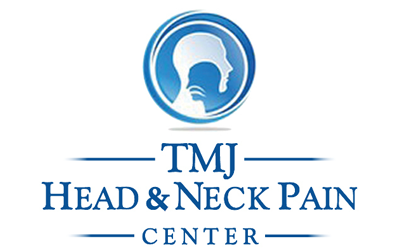- Schedule an Appointment Today
- (310) 231-5100
- drjelisha@gmail.com
TMJ Sleep Apnea Mouth Piece
How an Injury May Result in TMJ Pain
December 20, 2019Symptoms of TMJ Pain
December 20, 2019The answer is YES; you can have both TMD (temporomandibular joint disorder) and OSA (obstructive sleep apnea). Sometimes it can be hard to know which symptoms belong to which disorder, as many are overlapping. For example, some overlapping symptoms of TMD and OSA are as follows:
- Headaches (especially upon wakening)
- Jaw Pain
- Facial Pain
- Chronic Fatigue
- Frequent Illness
- Irritability
- Difficulty Concentrating
- Memory Problems
- Depression
A study published in the Journal of Clinical Sleep Medicine stated, “PSG (overnight sleep test) recordings showed that nearly 36% of TMD patients meet diagnostic criteria for insomnia, and more than 28% meet criteria for obstructive sleep apnea.” (Dubrovsky, et al)
There are a multitude of reasons why you could be suffering from TMD, OSA or both. Muscle strain, trauma, or pre-existing bite problems are a few examples of causes. Now you are probably wondering which one you treat first. You’ll be happy to know that you can actually treat both at the same time!
Believe it or not, wearing an appliance can in some cases also reduce the severity of your sleep apnea and TMJ symptoms. Wearing a mandibular intraoral TMJ sleep apnea appliance moves your mandible (lower jaw) into a forward position, opening up the airway. In mild Obstructive Sleep Apnea the repositioning of mandible to cranium may be enough to control, but the more severe the OSA, the less successful is an oral appliance for OSA since the mandible cannot be advanced to the point of creating pain or TMD.
If you have the proper amount of air flowing through your system, the chances of you suffering from a sleep breathing disorder are automatically reduced. Depending on the severity of a person’s OSA, both a CPAP and TMJ sleep apnea appliance may be necessary for maximum benefit/relief.
During sleep, airway obstruction may occur anywhere between the nasopharynx and the larynx – the most common areas being behind the base of the tongue (retroglossal) and behind the soft palate (retropalatal).

There have been several studies that indicate advancement of the mandible forward can open up the airway and reduce pharyngeal collapsibility. Additionally, anterior movement of the tongue decreases the gravitational effect on the soft palate.
The mandible is limited in the amount of advancement necessary for OSA and the centralization of condyles within the glenoid fossae (the back of the jaw as it hinges in the TM joint) may not be sufficient to preventing airway collapse in the back of the throat, even if that is the correct position to control TMD.

Jaw moving forward = Tongue moving forward = Opened airway
In regards to TMD treatment, moving the lower jaw (mandible) forward with the use of an TMJ sleep apnea appliance takes pressure off of the jaw joints. Space is created in the joint compartment/s for the displaced disc/s to return to their normal anatomical position.
The first goal is to relieve the muscle spasm and pain using the removable TMJ sleep apnea appliance, and hopefully restore the dislocated disc/s within the jaw joint/s to normal anatomical position. Once the jaw joints are stabilized, your treatment advances into the second phase, which is to correct your bite.
As seen in the illustration below, the orthotic device will move the lower jaw forward, taking pressure off the jaw joint.
The educational model below is invented and patented by Dr. Richard Klein

With Oral Appliance air flows normally Without Oral Appliance air cannot flow into lungs
Most TMD cases can be controlled with an orthotic and/or physical medicine technique. Treatment with an intraoral TMJ sleep apnea appliance should always be tried first, before any surgical intervention. Depending on the severity of the case, there is a possibility that the disc/s could go back into place. A treatment time of anywhere from 1-2 years is recommended, prior to a consultation with a maxillofacial surgeon.
If the tissues of the jaw joint/s are severely damaged to such an extent that they do not respond to appliance therapy, or only partially respond, then surgery may be necessary to obtain the desired result.
TMJ Specialist Los Angeles
Dr. Jacob Elisha has over 30 years of experience in the field of dentistry, periodontics, and cutting-edge restorative techniques in Los Angeles, CA. Dr. Jacob Elisha is an authority in on TMJ Disorders. He has successfully treated patients with TMJ disorders in Los Angeles in the past and looks forward to the future.
TMJ Disorders. An award-winning oral maxillofacial surgeon and Los Angeles TMJ specialist, Dr. Jacob Elisha is known for providing among the most effective TMJ treatment Beverly Hills has to offer—improving jaw function and delivering permanent relief from chronic pain.
